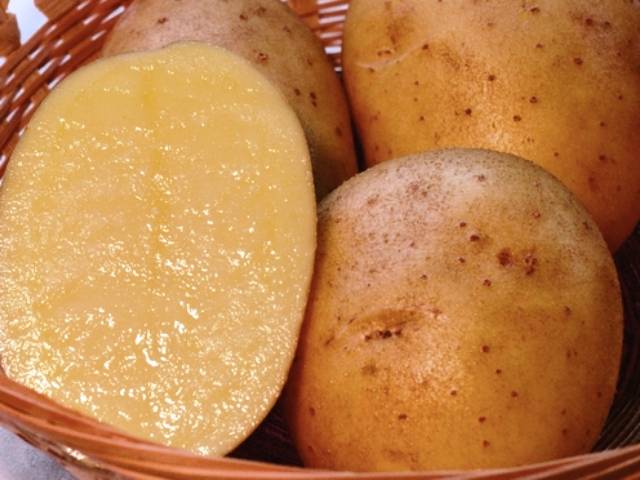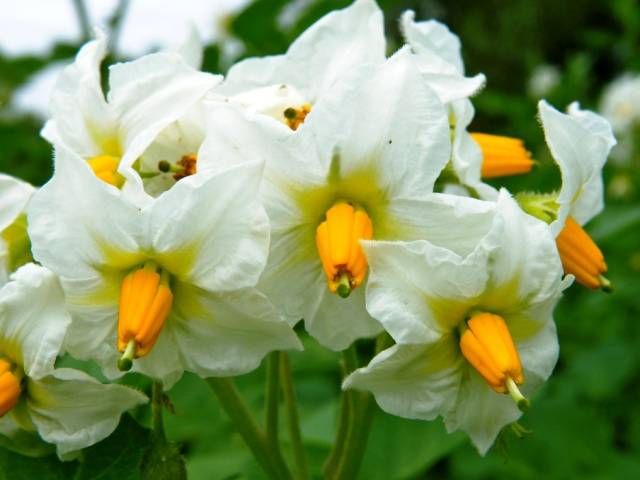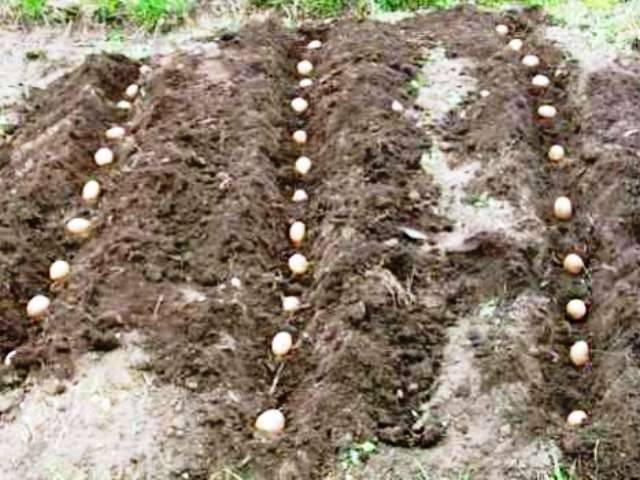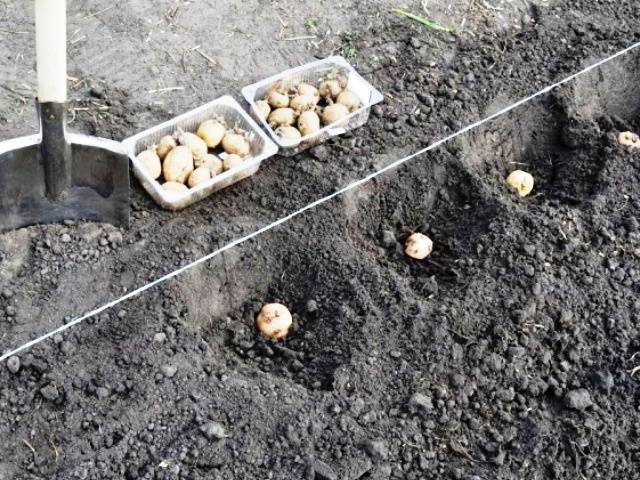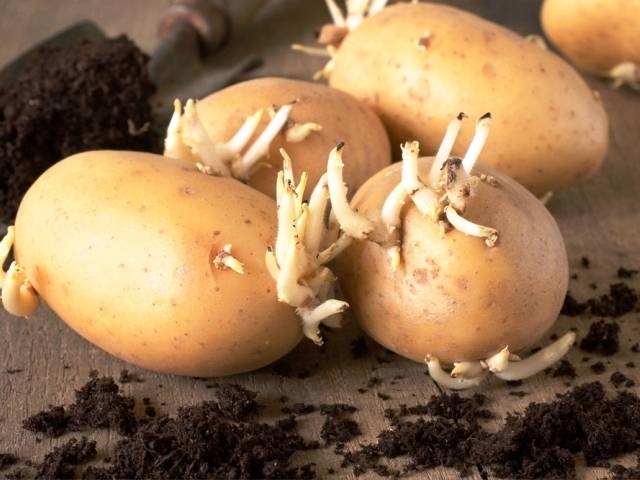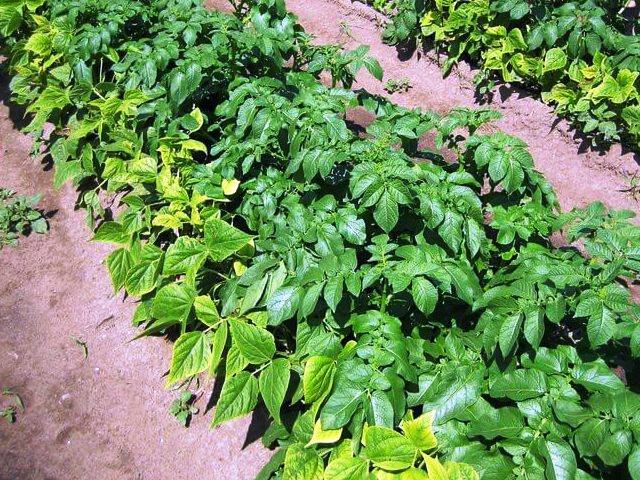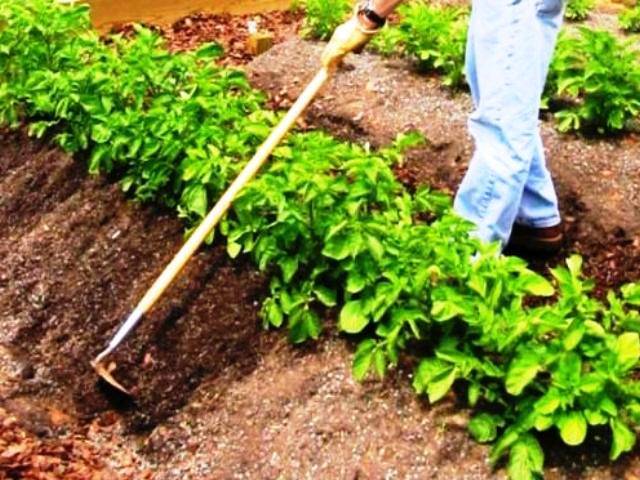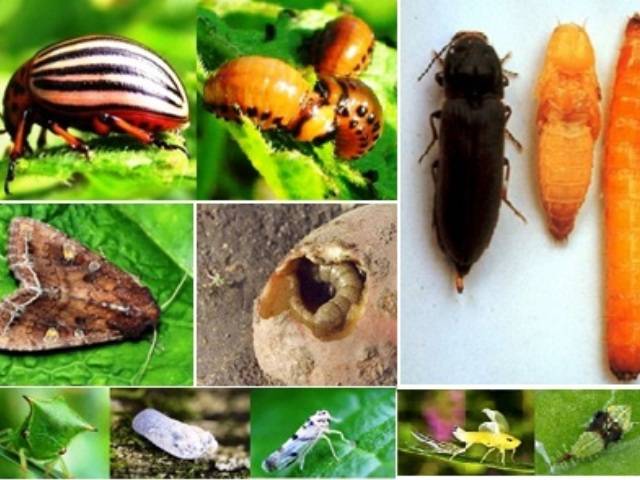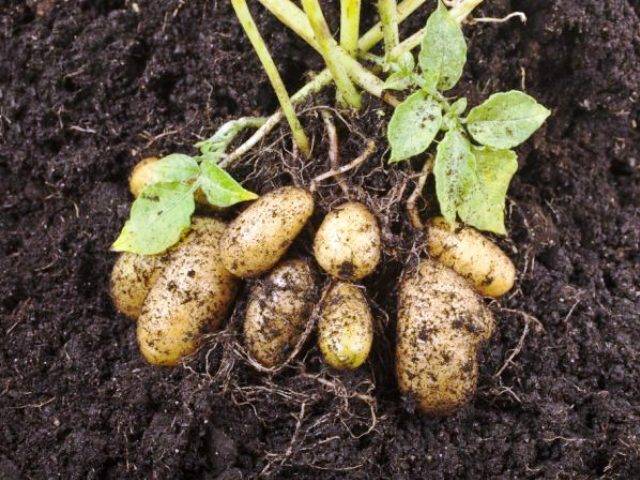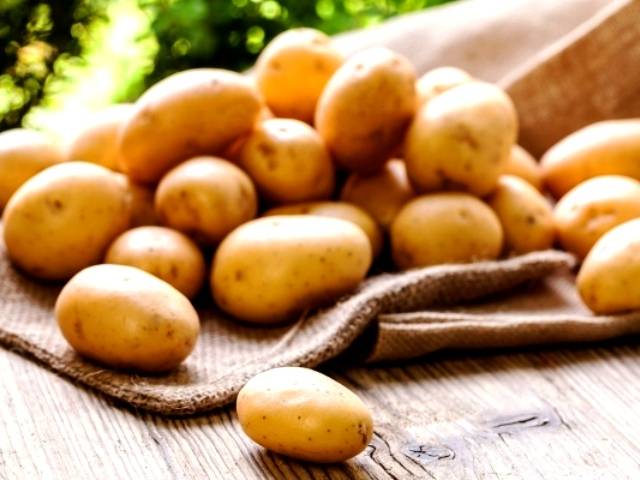Content
Inara variety in recent years has been at the forefront of the line of mid-early potato varieties. Such interest is due to the good yield and relative unpretentiousness of the Inara variety among other potato varieties of the mid-early ripening period.
Taste qualities, agricultural technology and low requirements for storage conditions make it possible to achieve high results in personal subsidiary farms and farms, as well as to grow the Inara variety on an industrial scale in those regions of Russia that are traditionally considered to be zones of risky farming.
Origin story
The authors of the variety are breeders of Norika Nordring Kartoffelzucht und Vermehrungs GmbH. Norika has fifty years of experience in successfully breeding and growing elite varieties of potatoes. It is noteworthy that the Inara variety was obtained in the climatic conditions of the island of Rügen, located in the Baltic Sea, which in their severity resemble the Central and Middle regions of the Russian Federation.
It is noteworthy that the creators of the Inara variety continue to supervise their product, issuing licenses for the cultivation of seed material to German farmers, as well as controlling the varietal qualities of Inara from official distributors in the Arkhangelsk region and in other regions of Russia, who are involved in the popularization of varietal potatoes of the German company.
Inara potatoes have passed phytosanitary control on the territory of the Russian Federation and are allowed for distribution and cultivation. Currently, the variety has become widespread not only in the recommended areas, but also in the south of Russia.
Description and characteristics
The Inara variety is distinguished by medium-sized bushes, up to 80 cm high. It has erect, succulent stems, compactly located around the root rosette. The color of the stems and leaves corresponds to the generic characteristics of the potato:
- light green - at the beginning of the growing season;
- a dark green shade in the flowering phase;
- yellow and brown - in the phase of biological maturity.
The leaves of the plant are paired, oval in shape, slightly pointed at the tips, on short petioles, with a relief pattern.
During the flowering period, the potato throws out flower stalks in "clusters". The Inara variety has white flowers with a yellow base at the sepals.
The root system of potatoes is located close to the soil surface, has a fibrous structure. Inara forms 8-10 tubers on stolons, weighing from 80 g to 140 g. The number and weight of tubers depend on agrotechnical and climatic factors.
Inara potatoes are popular due to their versatile table qualities, the correct shape of oval tubers, without deep eyes. The peel at the stage of biological maturity has a golden brown hue, the pulp of the tubers is moderately dense, creamy raw, white after heat treatment.
Advantages and disadvantages
Inara requires standard conditions of agricultural technology, like any potato variety, and only if all the rules are observed can the advantages of the variety be discovered.
pros | Minuses |
Suitable for technical cleaning due to the smooth and even surface of the tubers |
|
Fruitful variety - 25-42 kg / m2 |
|
Standard agricultural technology |
|
Resistance to scab, late blight of stems, nematodes, rot, potato crayfish |
|
Satisfactory table quality, starch content 11-14% |
|
Keeping quality 96% |
|
During storage, it does not lose its density and taste | During storage requires regular inspection and removal of sprouts |
In addition to compliance with agricultural practices, it is necessary to take into account regional weather and climatic conditions, soil composition. The quality of the variety is significantly influenced by the seed material.
Landing
Planting potatoes begins with soil preparation immediately after harvest. The area where the potatoes were grown should be given special attention if it is not possible to follow the rules of crop rotation.
- After harvesting potatoes, be sure to clear the area from the tops. It is taken outside and burned in order to avoid contamination of the soil with infectious agents.
- With a limited area of the site, in order to comply with the rules of crop rotation, after harvesting potatoes, it is advisable to plant spicy leafy crops, radish or radish, lettuce, some types of cabbage, legumes on the site. Since Inara's potatoes are harvested in June, there is a double benefit: improving the soil composition and getting additional crops for other, early maturing or frost-resistant crops.
- In the fall, the site planned for growing potatoes is dug to a depth of 30-40 cm, manure is applied (10 kg / m2), since potatoes produce an excellent harvest when grown in organic-enriched soil.
- In the spring, with repeated digging and loosening of the soil for planting potatoes, it is imperative to add urea, nitrogen, potassium and phosphorus fertilizers.
This measure will increase the future potato yield by 15-20%.
Inara variety, like all potato varieties, prefers fertile and light soil, with good aeration and moderate humidity. Therefore, it is important to improve the composition of clay soil by introducing sand, dolomite flour. Potatoes are not very susceptible to the level of acidity of the soil, and high humidity can cause many diseases, spoil the varietal qualities of Inara's potatoes, and shorten the shelf life.
Before planting, it is necessary to place the tubers in a warm room and germinate within 20-30 days. The strongest sprouts are left on the tubers, and the rest are removed. For rapid germination, tubers are treated with biostimulants - this technique allows you to get a friendly harvest with a good increase, and also largely regulates the optimal planting dates for the mid-early Inara variety.
Landing patterns vary. In private household plots, where potatoes are planted and harvested by hand, two traditional methods are mainly used: trench and square-nest. 5-6 tubers are planted per square meter of the plot, leaving such a distance between future plants so that the grown bushes close together, forming a microclimate in the root zone. But at the same time, you should not thicken the plantings so much that the plants interfere with each other in the development of tubers.
Therefore, the optimal distance between the rows of the Inara variety, taking into account the structure of its bushes, is 50 cm. The distance in the row should be the same. It is allowed to shift the planting pattern by 10 cm towards increasing row spacings or in rows. The 50x70 cm scheme is used when growing beans and potatoes at the same time.
In addition, beans can protect potatoes from the heat by acting as a stage crop.
The planting depth of tubers depends on the composition of the soil:
- 5 cm - for clay soil;
- 10-12 cm - for loam;
- 14-16 cm - for sandy soil enriched with organic matter and mineral complex.
When planting potatoes, phosphorus and potassium fertilizers are applied in a hole or trench. The timing of planting prepared seed material is determined by regional weather conditions.It should be borne in mind that the technical ripeness of Inara potatoes occurs in 40-45 days after the emergence of seedlings, and biological maturity occurs in 80 days.
Care
7-10 days after planting potatoes, a period of regular care for the future harvest begins, and continues until the tubers are laid for storage. The standard agronomic rules for growing potatoes are applied to the cultivation of the Inara variety. Each stage of care plays an important role, therefore, the necessary agrotechnical measures cannot be ignored.
Loosening and weeding
Before emergence, the plot is harrowed to remove weeds.
Aeration of the soil improves the palatability of potatoes and increases the yield. In heavy soil, regular loosening of the row spacings is also necessary because the high density of the soil deforms the tubers, and they acquire a non-marketable appearance.
Regular weeding of row spacings, destruction of weeds on the site is very important. It is a preventive measure against pests and diseases. The manufacturer claims that Inara is a resistant variety, but its ultimate strength should not be tested.
Loosening is carried out after rain or watering, to remove crust on the surface, as well as to kill weeds.
Watering
Artificial watering of potatoes is necessary during dry periods, and in cases where sand predominates in the soil. Inara potatoes tolerate drought relatively easily, but lack of moisture affects the formation and growth of tubers. At the same time, excess moisture is also discouraged when growing potatoes.
At a prolonged temperature over 220With the dropping of buds begins and the growth of tubers stops. At this time, it is advisable to support the bushes with irrigation, which is best done in the evening.
Hilling and feeding
In the phase when the seedlings reach a height of 15 cm, the first hilling is necessarily carried out, which protects the root system from moisture evaporation, activates the formation of tubers. The first hilling can be preceded by additional feeding with potassium and phosphorus, or by complex preparations with the addition of microelements. Water must be thoroughly watered before feeding the plant. In the beginning of budding phase, a second hilling is carried out, which contributes to additional tuberization.
Diseases and pests
When growing potatoes of any variety, it is impossible to do without preventive pest control measures. If gardeners do not have sufficient knowledge in the field of agrochemistry, then it is better to stock up on insecticides of a universal spectrum of application, which have been on the market for a long time, and have been successfully used: Tabu, Barrier - universal preparations of a new generation. An old, proven and effective remedy is Bordeaux mixture, which is also suitable for fighting infections.
Folk remedies have also proven themselves in the fight against pests and diseases: infusions of chamomile, celandine, mustard or walnut leaves. These funds are used to irrigate bushes. Cut grass and leaves are scattered between rows.
Harvesting
If the Inara variety is intended for summer consumption, then it is permissible to start harvesting at the stage of technical maturity - 45-50 days. At this time, the bushes are in the phase of active flowering, and in the underground part of the plants there are already formed tubers. Stems and leaves of plants retain their green color and juiciness. The green tops are mowed two days before the potatoes are harvested.
"Young" potatoes are stored for no more than two weeks at a temperature of 2-50C, in paper bags or canvas bags to prevent condensation. Therefore, when harvesting potatoes at the stage of technical ripeness for personal consumption, it is better to dig up the tubers as they are consumed in order to ensure the best preservation of the product.
Potatoes for winter consumption and for planting are harvested at the stage of biological maturity. For the Inara variety, this period occurs after 80 days. But, depending on the regional climatic conditions, these terms may shift in one direction or another. The degree of maturity of potatoes can be determined by the main external feature of plants: wilting and mass lodging of the stems are characteristic for the completion of the potato growing season. Further, within 3-4 weeks, biological maturation of tubers occurs. Potato ready for harvest - firm skin.
It is better to harvest in dry weather, but if this is not possible, then the dug potatoes are dried under a canopy, protected from sunlight, the soil is removed, and sorted. Selected seed is processed and stored separately. Cull out tubers affected by insects and diseases.
The storage room is disinfected with slaked lime, copper sulfate, and ventilated. During the entire storage period, a temperature of 3-5 should be maintained in the basement.0FROM.
Conclusion
Potatoes are the "second bread", and, of course, the agricultural technology of its cultivation should be given attention not only to breeders, but also to summer residents who are far from deep scientific research. For the Inara variety and other potato varieties to bring a rich harvest and enjoy the results of the hard work of growing potatoes, every little detail in its agricultural technology is important.
The Inara variety has fans, and there are vegetable growers who say that this variety needs to be improved. Both summer residents and breeders are always interested in knowing the opinion of those who tested the Inara variety on their site.
Reviews of the variety Inara
